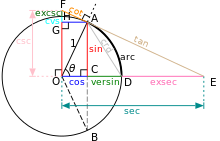Psychopathy, sometimes known as antisocial personality disorder, is characterized by a lack of empathy and severely amoral conduct. Because people with psychopathy have so much trouble empathizing they are much less afraid to cross social boundaries, insult or hurt others. Because about 1% of the population are psychopaths evolutionary psychologists have come to believe that psychopathy may represent a viable ecological strategy that helps an individual to selfishly gain resources by taking advantage of others. Our hunting and gathering ancestors have relied on cooperation for millions of years and this is why most people are not psychopathic. Perhaps though, in small numbers, genes that influenced individuals to be less helpful and more selfish benefitted those that bore them explaining why psychopathy is heritable and why genes for psychopathy exist in the human genome. It is too bad that these genes can’t tell if the environment is a healthy, friendly one that is conducive to team playing or if it is a bad one which would reward those that defect from the team. Maybe the genes can tell...
A good deal of very interesting research points to the fact that environmental cues can switch on genes that would normally stay dormant, resulting in changes to the body and brain. For instance, water bugs whose mothers are stressed out by the scent of their natural predators make babies that have totally different protective armor. A huge number of similar “predictive adaptive responses” to environmental adversity have been documented in animals and even humans – many arising from prenatal stress. Studies of the Dutch Hunger Winter of 1944-1945 have shown that individuals born just after this famine are more likely to have lower metabolisms. This is thought to represent a predictive response to low food availability. Interestingly, these studies also show that these famine-born individuals are more likely to be psychopathic.
A good deal of very interesting research points to the fact that environmental cues can switch on genes that would normally stay dormant, resulting in changes to the body and brain. For instance, water bugs whose mothers are stressed out by the scent of their natural predators make babies that have totally different protective armor. A huge number of similar “predictive adaptive responses” to environmental adversity have been documented in animals and even humans – many arising from prenatal stress. Studies of the Dutch Hunger Winter of 1944-1945 have shown that individuals born just after this famine are more likely to have lower metabolisms. This is thought to represent a predictive response to low food availability. Interestingly, these studies also show that these famine-born individuals are more likely to be psychopathic.
It is difficult to say exactly what this means, but it suggests to me that humans may be programmed by early environmental stress (and perhaps postnatal adversity too) to be selfish, manipulative, guiltless and antisocial. It would make sense for natural selection to program us to be more deceitful and cunning in a hostile environment that is marked by scarcity and thus high levels of competition. Such a change would force the person or animal to look out for number 1 – to look out for its genes. Peruse the following clinical rating scale from the PCL-R and ask yourself: “what kind of environment would these traits go along well with?”
Psychopathic Traits:
Factor 1: Aggressive narcissism
- Glibness/superficial charm
- Grandiose sense of self-worth
- Pathological lying
- Cunning/manipulative
- Lack of remorse or guilt
- Emotionally shallow
- Callous/lack of empathy
- Failure to accept responsibility for own actions
Factor 2: Socially deviant lifestyle
- Need for stimulation/proneness to boredom
- Parasitic lifestyle
- Poor behavioral control
- Promiscuous sexual behavior
- Lack of realistic, long-term goals
- Impulsiveness
- Irresponsibility
- Juvenile delinquency
- Early behavioral problems
- Revocation of conditional release
Here are some of my favorite books that explain how common human traits are actually adaptive biological responses:
